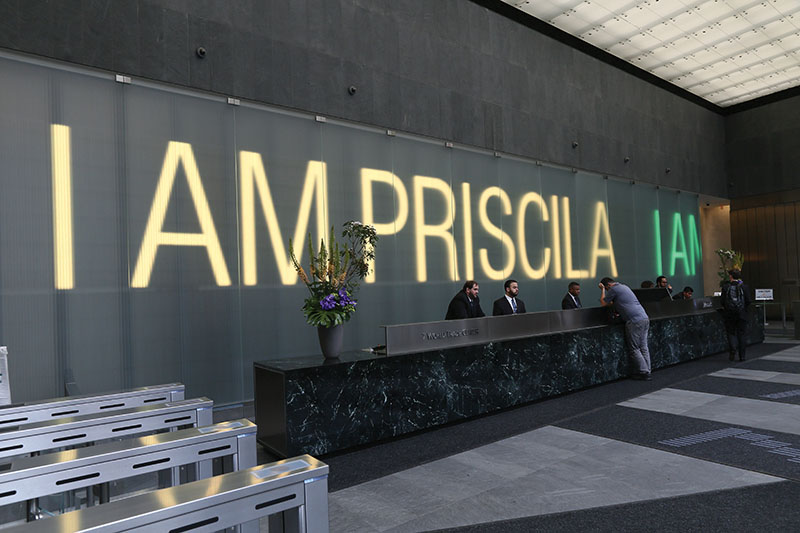

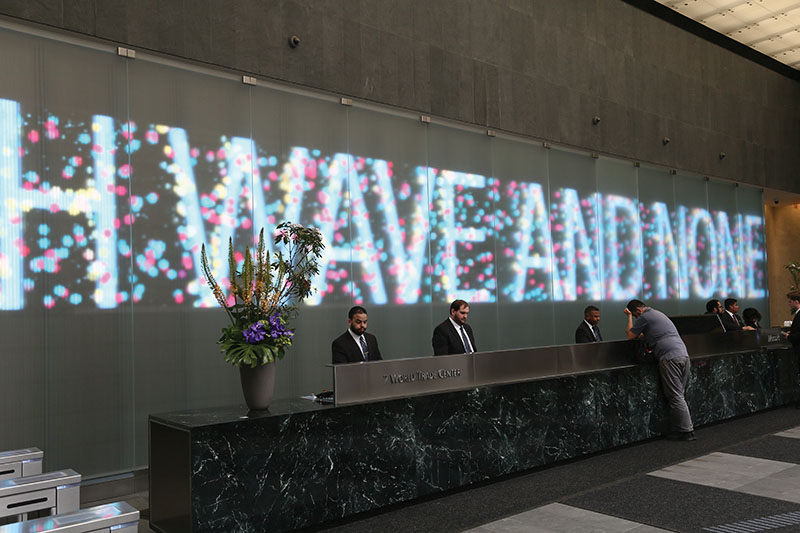

Art and architecture are no longer considered to be independent of one another or optional for a developer. Visionary developers now bring architects and artists together early in the design process rather than using art as a decorative afterthought. Art creates value in commercial real estate and plays a critical role in attracting and retaining quality tenants.
Even in modest developments, art is often integrated into the developer’s plans as a way of increasing the perceived value for tenants. Now art and architecture come together in a complete story that becomes a crucial part of branding, marketing and sales efforts.
Developer Larry Silverstein was a pioneer in this integration of art and architecture in his 2006 development of 7 World Trade Center. The designer James Carpenter worked with artist Jenny Holzer, who created a $1 million LED installation that stretches 65 ft. by 14 ft. high and cleverly hides a security wall behind the front desk. Silverstein landed the prime tenant Spotify for a three-floor lease at 4 World Trade Center because of their attraction to his use of graffiti art throughout the space, achieving just the vibe they wanted to attract top young creative talent. Now Spotify is the largest tenant at 4 World Trade with 564,000 s/f.
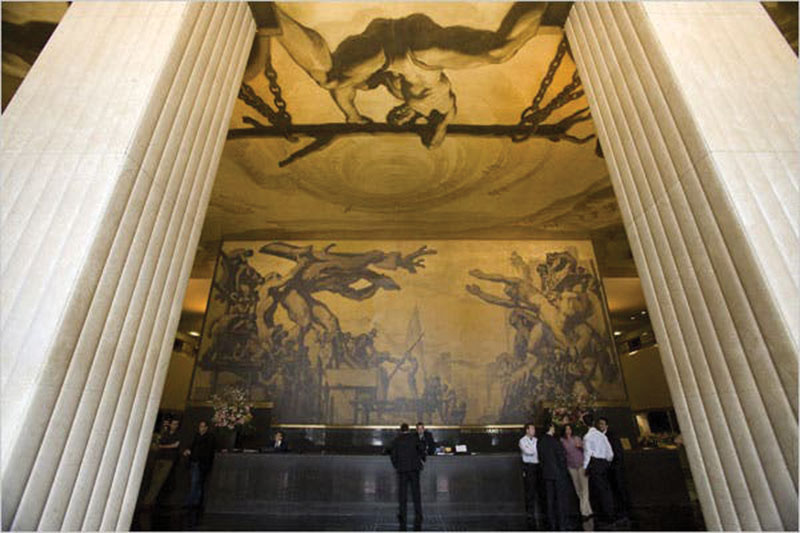
One of the best recent examples of the melding of art and architecture is the development of 53West53 above the MoMA, opening in the fall of this year. The architect, interior designer, and curators are using purchased and borrowed works for the lobbies, the gallery showroom, and model apartments.
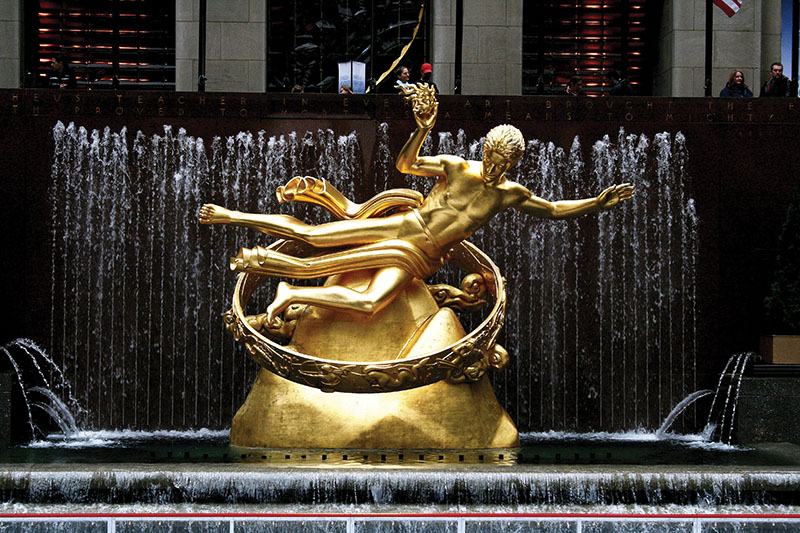
In the past, art was employed in only the most ambitious projects created by visionary real estate developers. In 1932, the Rockefeller family, led by Abby Aldrich Rockefeller, commissioned the artist Josep Maria Sert to paint the murals “American Progress” and Paul Manship to create the iconic Prometheus statue at 30 Rockefeller Center. This projected the power and influence of the family and a feeling of awe and reverence to the viewer. At the time, only the wealthiest could afford original art in their homes or have the discernment to collect the best.
Today, art has been democratized and become more accessible especially through the powerhouse art fairs popping up throughout the world. This has affected how art is experienced. “Everywhere is Art,” is how UBS expressed it in their ads during Art Basel’s art fairs and this is indeed true in today’s real estate environment.
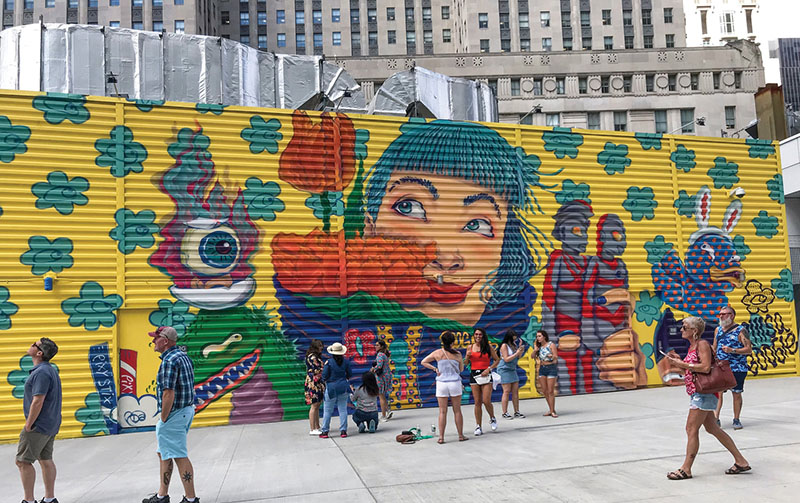
As tastes in art have become more inclusive, developers have begun to employ abstract artists including muralists and graffiti artists like boogieREZ, who painted corrugated walls at 2 World Trade Center. This gives architects and designers more latitude in how they can employ art inside and outside of their buildings and creates more excitement and visual appeal for tenants and visitors.
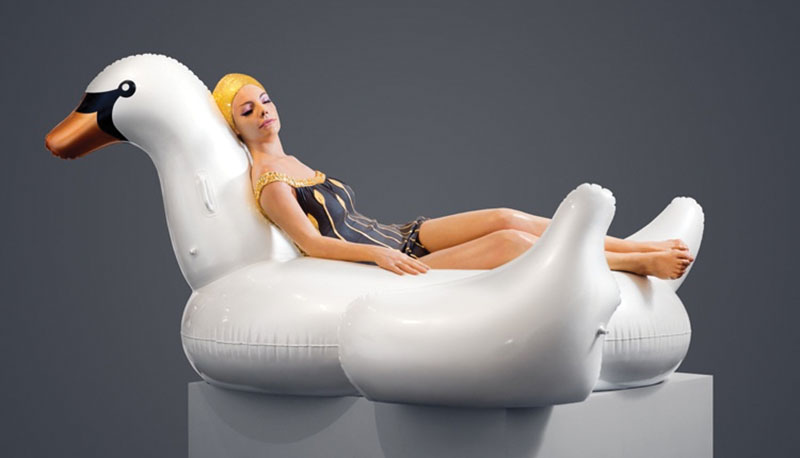
In hospitality, art plays a key role in the décor and creates a unique and welcoming experience as guests arrive. Upon entering the Conrad, a luxury brand operated by Hilton, located in Time Sq., visitors see a life-like and life-size sculpture depicting the Greek myth of Leda and the Swan by hyperrealist contemporary artist Carole Feuerman. The piece was exclusively commissioned by the hotel.
Even older, dated properties can use art work to activate lobbies without expensive structural alterations. Consider the gut renovation of 335 Madison Ave. by the Millsteins into an urban tech hub, wherein they have purchased a monumental sculpture by Takashi Murakami to increase appeal to the discerning and art-savvy Millennials who will be their key market.
While in the days of the Rockefellers, the use of art might have been viewed as an intimidating expression of power and wealth, owners and developers have now democratized art to make their properties appeal to a more sophisticated and knowledgeable audience of tenants who expect that art will be part of their everyday experience. Developers who ignore this trend do so at their peril.
Cindy Farkas Glanzrock is a commercial real estate broker with Glanzrock Realty Services, LLC and an art, gallery, retail, & restaurant consultant with Glanzrock Curatorial Service, LLC, New York, N.Y.




